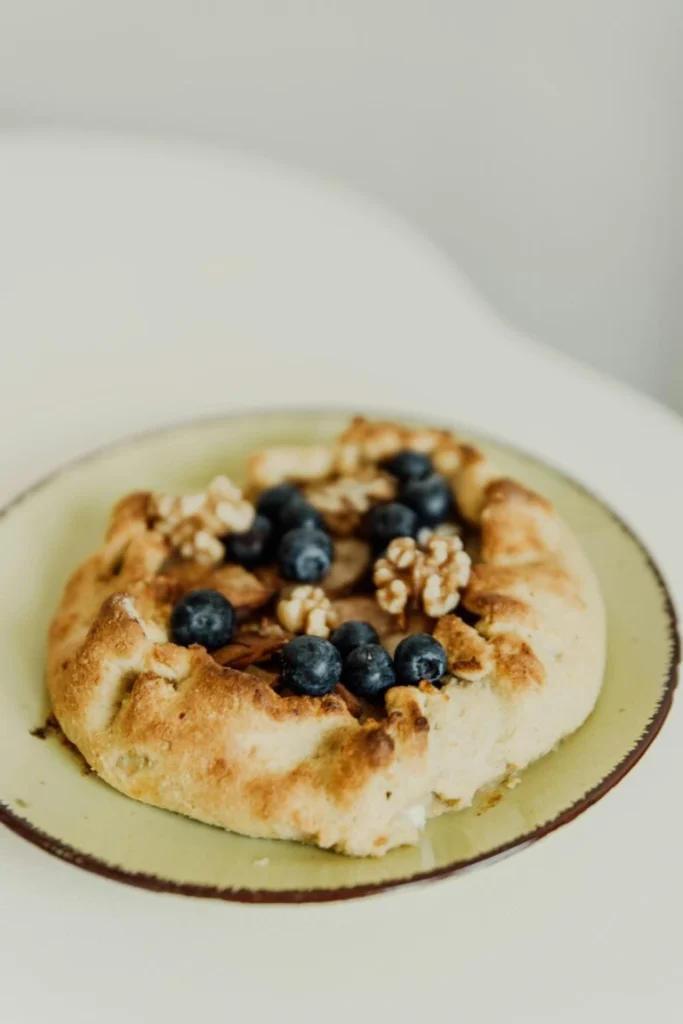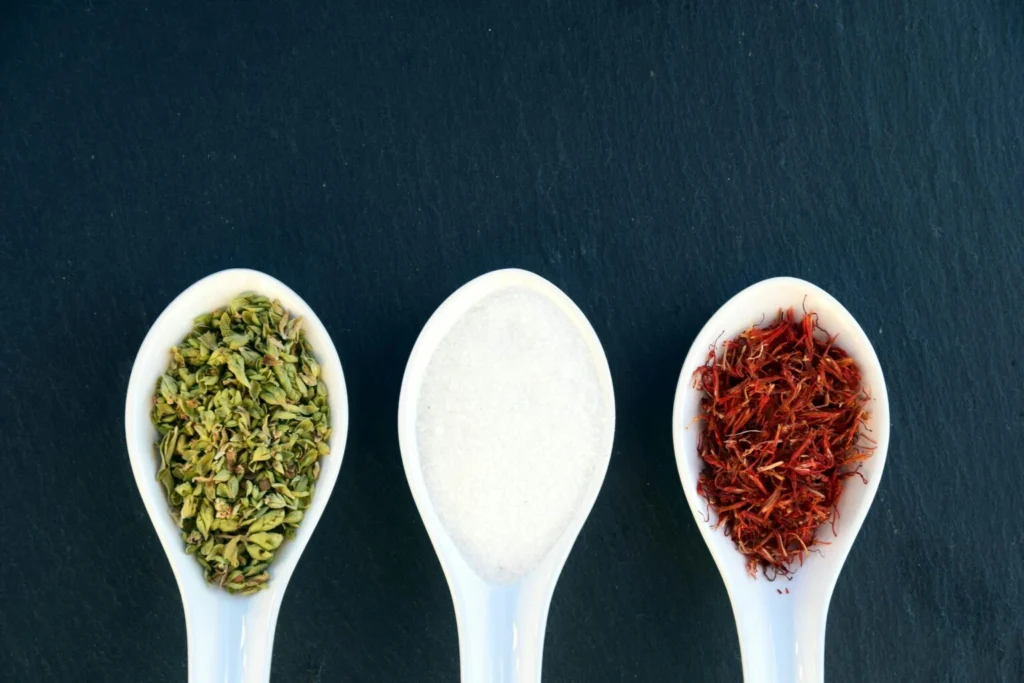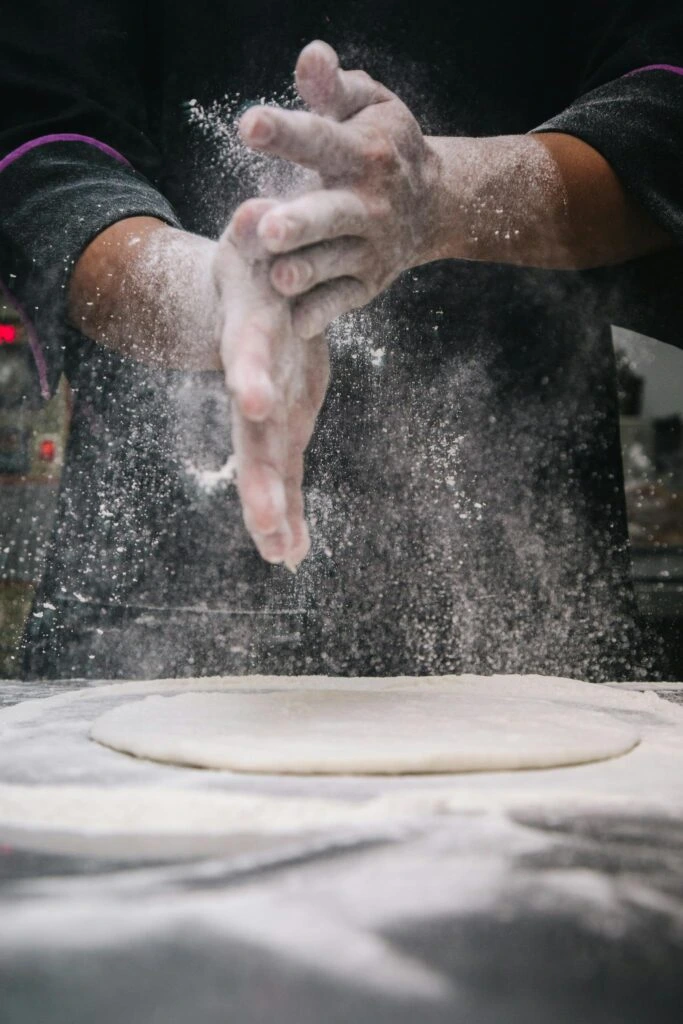Few things in life are as satisfying as the delicate, buttery layers of a freshly baked croissant. The golden-brown exterior, the tender flakiness inside—it’s no wonder this iconic French pastry has become a breakfast staple around the world. But today, we’re going to do more than enjoy a croissant. We’re going to elevate it, take it beyond the ordinary, and infuse it with a twist of elegance that transforms it into something truly unforgettable. Welcome to the art of the Almond and Saffron Pastry Delight, a reimagined croissant that brings a touch of luxury to your morning routine.
This isn’t just about making a croissant with a little extra filling. This is about turning a simple pastry into a fine dining experience—something you’d expect to find at the fanciest of patisseries but that you can create in your very own kitchen. With the rich, nutty flavor of almonds and the exotic warmth of saffron, this croissant will surprise and delight you with every bite.
But before we dive into the recipe, let’s talk about what makes the croissant such a beloved treat and why this reimagined version is the perfect way to bring a bit of indulgence into your life, whether it’s for a leisurely weekend breakfast or a special occasion.
A History of the Croissant: From Humble Beginnings to Global Icon

The story of the croissant is as rich and layered as the pastry itself. While it’s now synonymous with French cuisine, the croissant actually has roots that trace back to Austria. It all started with the kipferl, a crescent-shaped pastry popular in Vienna as far back as the 13th century. Unlike the croissant we know today, the kipferl was made from a denser dough and was often filled with nuts or marzipan.
So how did this Austrian treat become a French icon? Legend has it that in 1683, during the siege of Vienna by the Ottoman Empire, bakers working late into the night overheard the enemy tunneling under the city walls and raised the alarm, saving the city. To celebrate, the bakers created a pastry shaped like the crescent moon, a symbol of the Ottoman Empire, and the kipferl was born.
When Marie Antoinette, originally from Austria, became the queen of France, she is said to have introduced the kipferl to the French court. Over time, French bakers refined the recipe, using a technique known as lamination, where butter is folded into the dough to create layers of flakiness. And thus, the croissant as we know it today was born.
Fast forward a few centuries, and the croissant has become a breakfast staple across the world. But while the classic buttery croissant is beloved by many, today we’re going to take that tradition and elevate it, bringing in flavors that are both familiar and exotic, creating a pastry that’s a little bit decadent and a whole lot delicious.
The Allure of Almonds: A Nutty Twist on Tradition
The first element of our reimagined croissant is the almond filling. Almond croissants are already a popular variation, often found in bakeries next to their plain counterparts. But what makes almonds such a perfect match for a pastry like this?

Almonds have a natural sweetness and a rich, nutty flavor that pairs beautifully with the buttery flakiness of the croissant. When ground into a smooth frangipane—a classic almond cream filling—they add a luxurious texture and depth of flavor that elevates the pastry to new heights. Frangipane is often used in French desserts, from galette des rois to tarts, and its creamy consistency is the perfect contrast to the crispy layers of a well-baked croissant.
But this isn’t your average almond croissant. We’re adding another element to the mix, one that will take this pastry from delicious to extraordinary: saffron.
Saffron: The Golden Spice of Luxury

Saffron is one of the world’s most precious and expensive spices, often referred to as “red gold.” Its history is steeped in legend and luxury, and it has been prized for centuries for its vibrant color, unique flavor, and medicinal properties. Harvested by hand from the tiny stigmas of the Crocus sativus flower, saffron is a labor-intensive spice that adds an unparalleled depth to both savory and sweet dishes.
When you add saffron to a dish, you’re not just enhancing the flavor—you’re creating an experience. The spice brings a warmth and subtle earthiness that is difficult to replicate with any other ingredient. Its unmistakable aroma and vivid golden hue can elevate even the simplest of dishes into something worthy of a fine dining table.
In our reimagined croissant, saffron takes center stage alongside the almond filling. When combined with the sweetness of the frangipane, saffron’s delicate, floral notes add complexity and intrigue, turning a familiar pastry into something entirely new and exciting. The result is a croissant that’s fragrant, richly flavored, and visually stunning—a true treat for the senses.
The Art of Laminating Dough: Mastering the Croissant

Lamination
At the heart of every great croissant is the technique of lamination. This is what gives the croissant its signature layers, that light, airy interior that contrasts with the crisp, golden exterior. Laminating dough is a skill that requires patience and precision, but once mastered, it opens up a world of possibilities for creating flaky, buttery pastries at home.

The process involves folding layers of butter into the dough in a series of turns, known as “folds” or “turns”. Each fold builds more layers, and as the dough bakes, the butter melts and releases steam, which lifts the layers and creates that perfect, flaky texture.
How to Laminate
Here’s a brief overview of the process:
- Make the Dough: The dough for a croissant is a simple combination of flour, water, yeast, sugar, salt, and butter. It’s important to knead the dough until smooth and elastic to ensure it’s strong enough to withstand the lamination process.
- Prepare the Butter Block: The butter needs to be cold but pliable, so it can be folded into the dough without breaking. It’s best to flatten the butter into a square or rectangle before starting the lamination process.
- Roll and Fold: Once the dough has chilled, it’s time to begin laminating. You place the butter in the center of the dough and fold the dough over it like an envelope. Then, you roll out the dough and fold it into thirds—a process known as a “turn.”
- Repeat the Process: You chill the dough between each turn to prevent the butter from melting. After several turns, you create hundreds of thin layers of butter and dough, ready to shape into croissants.
While this process takes time, the result is well worth the effort. When baked, the layers puff up beautifully, creating that light, airy texture we all love in a croissant. And when paired with our almond and saffron filling, the croissant becomes more than just a pastry—it becomes a work of art.
Crafting the Almond and Saffron Pastry Delight: A Step-by-Step Guide
Now that we’ve explored the history, flavors, and techniques behind this reimagined croissant, let’s walk through the process of creating it in your kitchen. Don’t worry—making croissants from scratch might seem intimidating, but with some patience and careful attention to detail, you can create a truly exceptional pastry.

Croissant Reimagined: Almond and Saffron Pastry Delight
Ingredients
Method
- Prepare the Dough: In a small bowl, combine the yeast, warm water, and sugar. Let situntil foamy, about 5 minutes. In a large bowl, mix the flour and salt. Add theyeast mixture and milk, and knead until smooth. Cover the dough and let it risefor 1 hour, or until doubled in size.
- Laminate the Dough: Once the dough has risen, punch it down and roll it into a rectangle. Place the butter block in the center and fold the dough over the butter like an envelope. Roll it out and fold in thirds. Repeat this process three times, chilling the dough between each turn.
- Make the Filling: In a bowl, cream the butter and sugar together until light andfluffy. Add the almond flour, egg, almond extract, and saffron mixture, and mixuntil smooth.
- Shape the Croissants: Roll the laminated dough into a large rectangle and cut into triangles. Spread a small amount of the almond-saffron filling onto each triangle and roll them up into croissant shapes.
- Bake: Preheatthe oven to 400°F (200°C). Brush the croissants with an egg wash and sprinklewith slivered almonds. Bake for 15-20 minutes, oruntil golden brown.
- Serve: Letthe croissants cool slightly before serving. The flaky, buttery layers combinedwith the rich almond-saffron filling will create a pastry that’s delicate,fragrant, and utterly indulgent.
A Morning Indulgence: Why You Deserve This Pastry Delight
Life can be busy and chaotic, but that doesn’t mean you should deny yourself simple pleasures. Treating yourself to a fine dining experience at home can be a great way to start your day. With an Almond and Saffron Pastry Delight, you can transform an ordinary morning into something special. This pastry offers a luxurious moment of indulgence that’s easy to achieve.
This reimagined croissant isn’t just about breakfast. It’s a chance to savor a well-crafted pastry and enjoy a culinary experience that delights all your senses. Take a little extra time this weekend. Head to the kitchen and create a croissant that’s as much a pleasure to make as it is to eat.
FAQS
1. What is “Croissant Reimagined: Almond and Saffron Pastry Delight”?
It’s a luxurious twist on the classic croissant, filled with creamy almond frangipane and infused with aromatic saffron, combining French technique with bold, exotic flavors.
2. How is it different from a traditional almond croissant?
While traditional almond croissants feature a simple almond filling, this version introduces saffron, often called “red gold,” for a floral, earthy depth that elevates the pastry.
3. What does saffron add to the flavor?
Saffron adds a subtle floral and honeyed aroma that complements the richness of the almond cream, making each bite more refined and aromatic.
4. What kind of almonds are used in the filling?
The filling is made with finely ground blanched almonds to achieve a smooth, creamy frangipane texture that bakes into the croissant beautifully.
5. Is this croissant overly sweet?
No — the sweetness is balanced. The natural sweetness of almonds and a hint of sugar complement the buttery pastry and subtle saffron flavor.
In Conclusion: A Feast for the Eyes and the Palate
Fine dining is all about presentation. Thoughtful plating not only makes a dish more appealing but also enhances the meal’s enjoyment. By following these tips, you can turn your Almond and Saffron Pastry Delight into a visual masterpiece, sure to impress family and friends.
Successful plating is about balance—between colors, textures, and flavors. Use negative space to highlight the pastry, add height for interest, and garnish with purpose. With practice, you’ll create dishes that are as beautiful as they are delicious.
Bon appétit! Enjoy the art of plating your Almond and Saffron Pastry Delight!
These are some other recipes that you might like:


5 thoughts on “Croissant Reimagined: Almond and Saffron Pastry Delight”